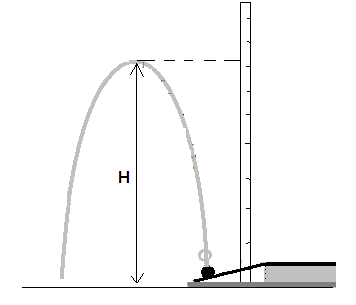Science content: what have we learned about kinetic energy and potential energy?

Air Ball
When you throw a ball in the air, what determines how high it goes?
Materials
1. Explore the launcher.
Practice launching one of the magnets so that it goes to the same height each time. Pull the spring board down to the same point (the table top) each time, and release it the same way so the magnet moves consistently.
Record two observations.
2. How does the height that the projectile reaches depend on its weight?
To investigate this, launch a stack of two magnets, three magnets, or four magnets, measuring the height each combination reaches. Repeat the measurement 5 times for each combination.
Record your data in Table 1, in meters.
Table 1: Height different projectiles reach
when launched with the same launcher
|
trial
number |
H
reached
by (in meters) |
H
two
magnets (in meters) |
H
three
magnets (in meters) |
H
four
magnets (in meters) |
|
1 |
|
|
|
|
|
2 |
|
|
|
|
|
3 |
|
|
|
|
|
4 |
|
|
|
|
|
5 |
|
|
|
|
|
median
height |
|
|
|
|
3. Record the median height achieved by each projectile in table 2 below
4. The energy needed to raise an object straight up is calculated by E = W x H. (in Joules, if the height is in meters). In the last column, calculate the energy transferred to each projectile.
Table 2: Calculating the energy
transferred to each projectile
|
object |
W
weight of projectile (in newtons) |
H =
height reached by magnet (in meters) |
energy transferred to magnets
E = W x H (in Joules) | |
|
1
magnet |
0.07 |
|
|
|
|
2
magnets |
0.14 |
|
|
|
|
3
magnets |
0.21 |
|
|
|
|
4
magnets |
0.28 |
|
|
|
6. Why does the stack of 4 magnets not go as high as the other combinations?
7. What role did the law of conservation of energy play in this activity?
Check the box when you are
done:
Science content: what have we learned about kinetic energy and potential energy?